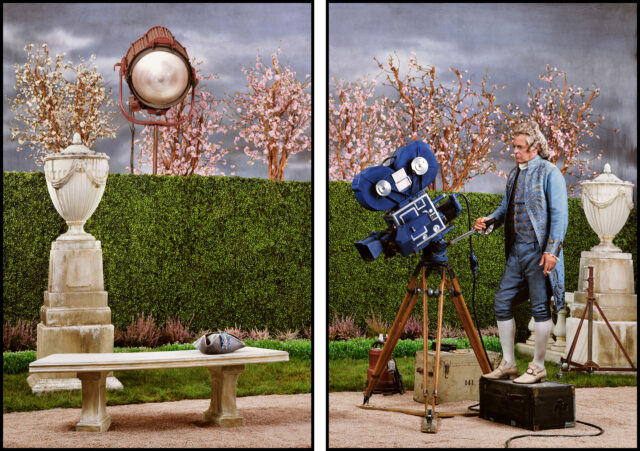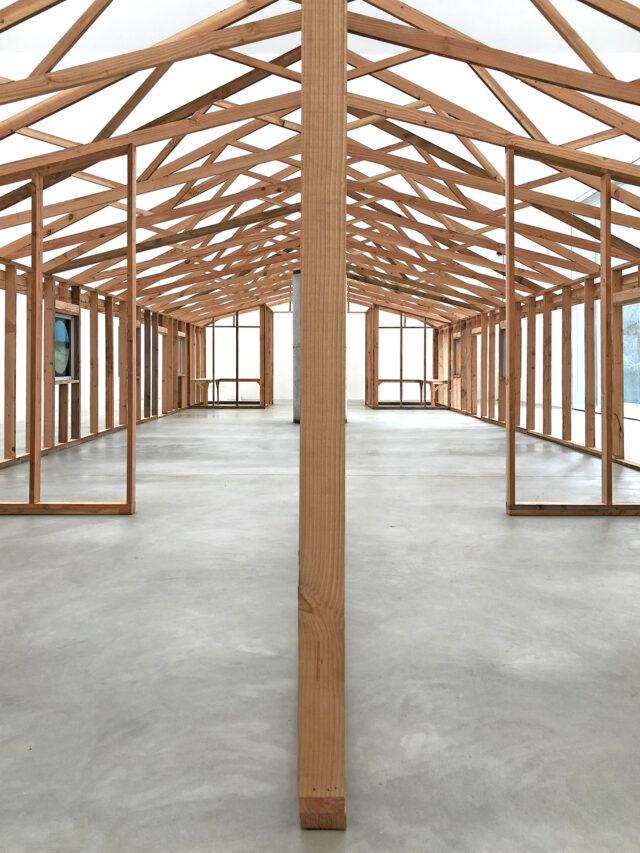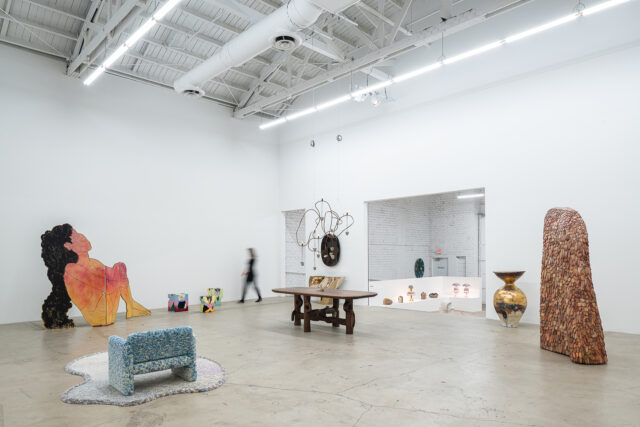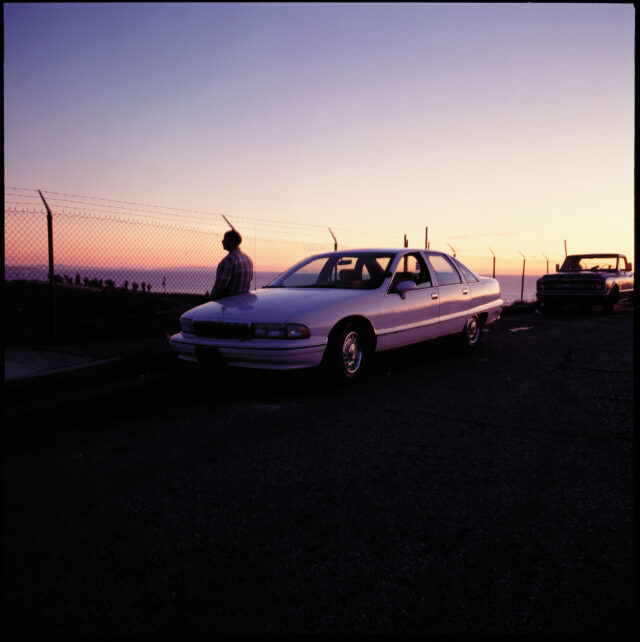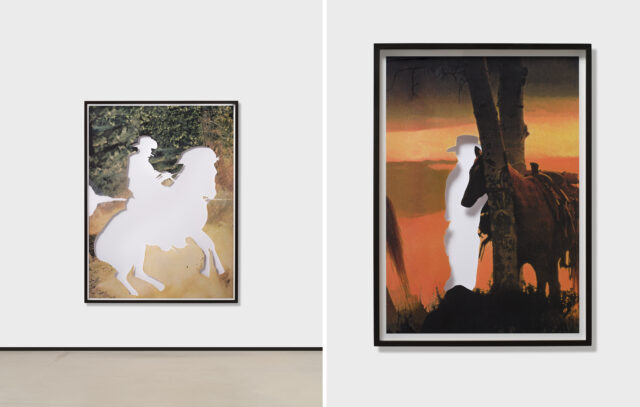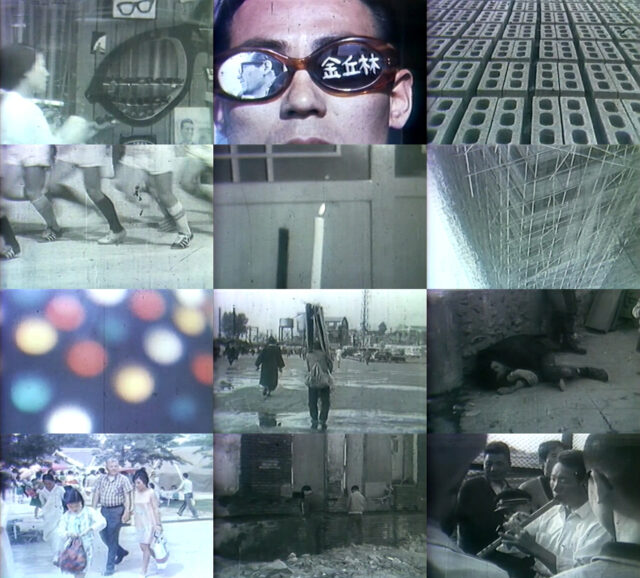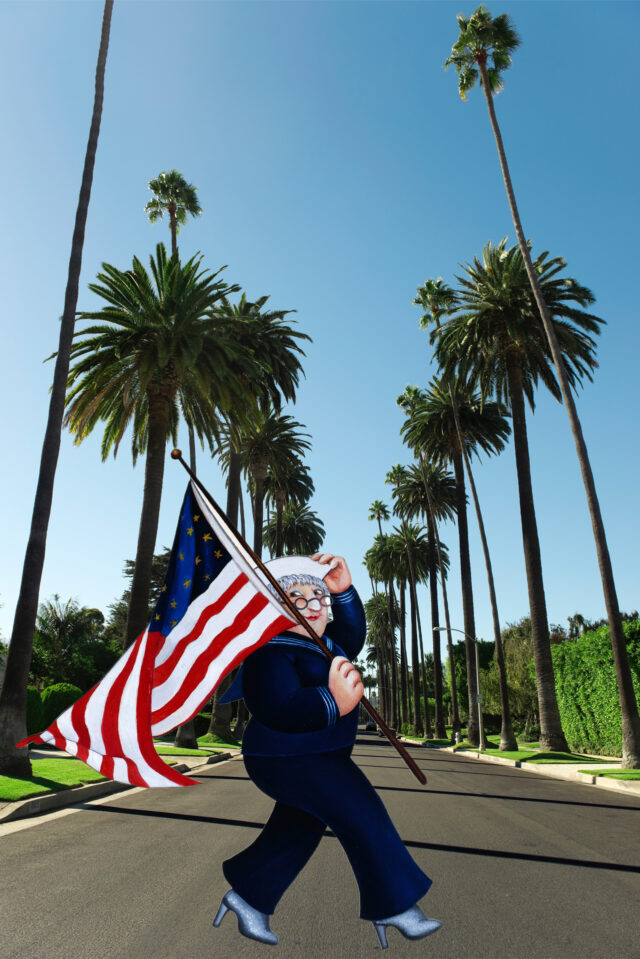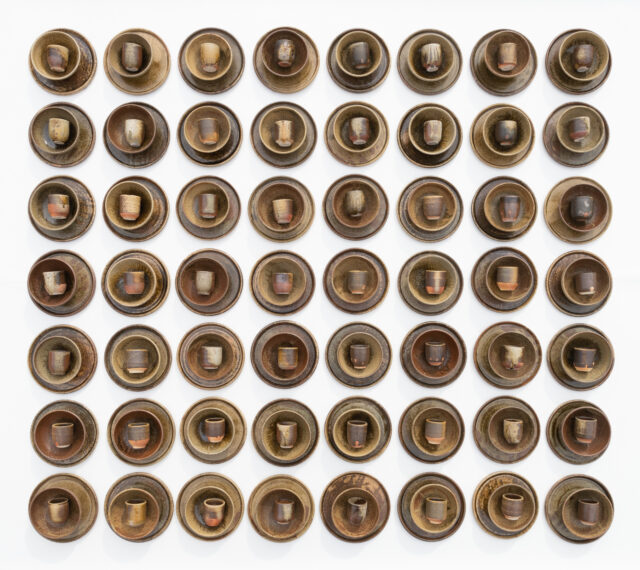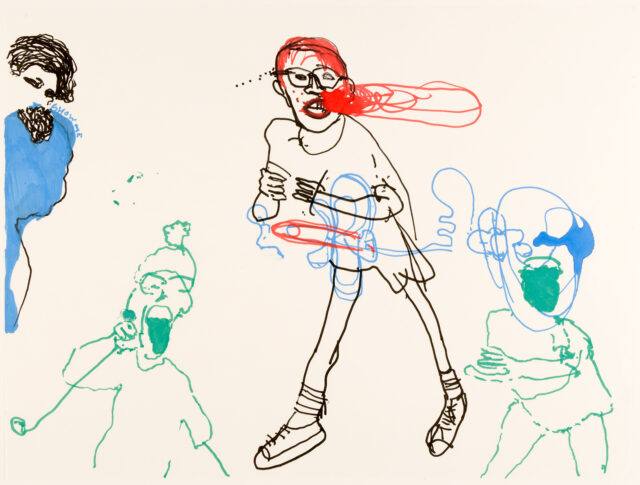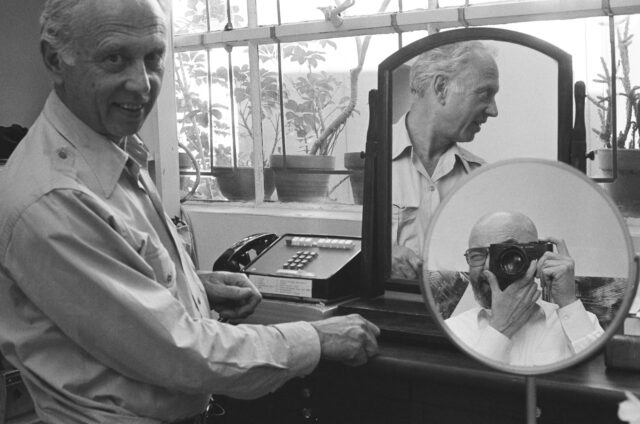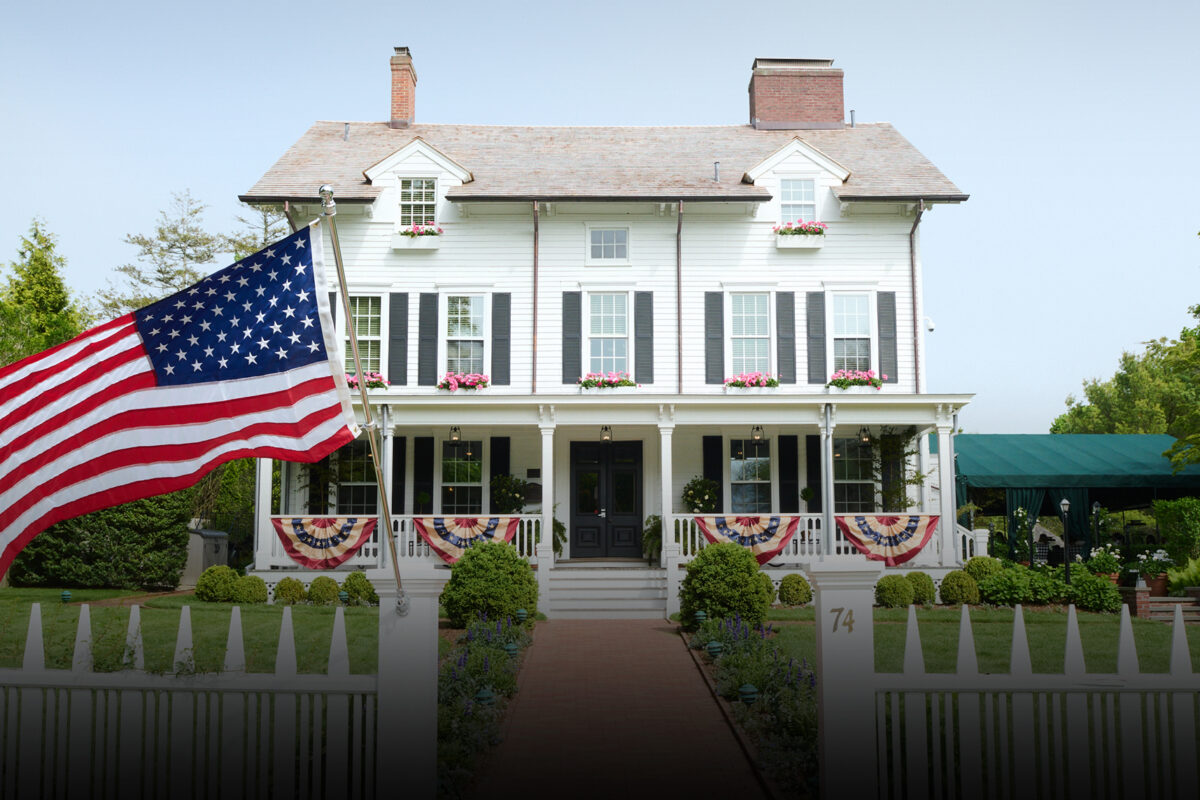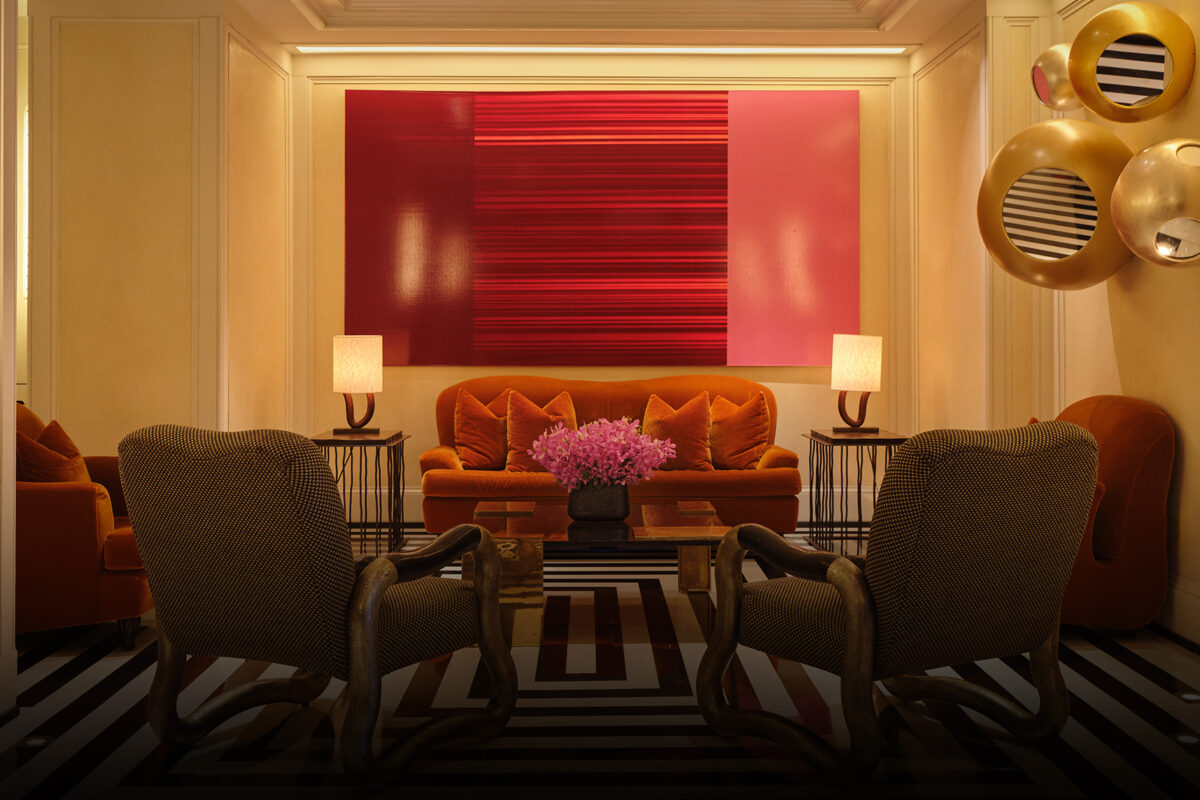While Frieze pulls in the crowds, there is plenty more to see beyond the Barker Hangar
Words by KELSEY McKINNON and ELIZABETH VARNELL
Rodney Graham, Actor/Director, 1954, 2013. PHOTO: © Rodney Graham, courtesy of Lisson Gallery.
Rodney Graham Lights Up Lisson Gallery
The late conceptual artist Rodney Graham’s large-scale backlit photographs and his textured abstract paintings at Lisson Gallery comprise the Canadian’s first solo show in Los Angeles in two decades. The exhibition, Rodney Graham: Paintings and Lightboxes, brings together the narrative-building fictional personas he adopted for his meticulously constructed portrait work with cubistic paintings that mirror the complexity required to create the light boxes. A drywaller taking a break or an open soundstage between takes that’s elaborately set with an 18th-century French garden are moments of repose Graham photographs, capturing his code-switching protagonists (played by himself) lost in thought. Graham’s ideas nod to Aleksandr Rodchenko, Jean Arp, and Pablo Picasso, and the textured backdrops and painted walls in the photographs link to Graham’s paintings — where his abstract ideas play out on canvases rather than studio sets. Through March 23. 1037 N. Sycamore Ave., L.A., 213-224-7550; lissongallery.com. E.V.
 |
Reference image of Oscar Tuazon’s installation for Dover Street Market at FelixLA. PHOTO: Courtesy of Oscar Tuazon and Morán Morán.
Felix Art Fair Goes Fashion
This year’s installment of Los Angeles’ Felix Art Fair includes sculptor Oscar Tuazon’s architectural structures, one of which houses a shoppable Dover Street Market installation inside the Hollywood Roosevelt Hotel’s ballroom. Alongside more than 60 galleries invited to this latest edition of the famously laid-back show launched in 2018 by Dean Valentine, Mills Morán, and Al Morán — where galleries rent rooms and poolside cabanas to display works inside the labyrinthine hotel with its David Hockney pool mural — the immersive boutique will house DSM wares. More than 70 brands championed or nurtured by the retailer, a brainchild of Rei Kawakubo and Adrian Joffe, are on offer inside Tuazon’s structure during the annual gathering. Artistic collaborations plus products created for the fair fill its entrance, while work from familiar artists and upstarts wait to be discovered inside. February 28–March 3. 7000 Hollywood Blvd., L.A.; felixfair.com. E.V.
 |
Ouattara Watts Brings a Brilliant Riot of Color to Karma
Across continents, New York–based Ouattara Watts has honed his painting technique, alternating between working on walls or floors while creating to the beat of music in his studio. Now the Abidjan-born artist is bringing his densely layered canvases laden with textiles, leaves, papier-mâché, photographic reproductions, and acrylics to Karma for his first Los Angeles exhibition. From his Ivory Coast roots to his fascination with Picasso that began during his studies at Beaux-Arts de Paris to his friendship with Jean-Michel Basquiat, Watts has honed his exploration of the human condition through brilliant color and fractal shapes. Patterns come from treads of the artist’s shoes and splashes of paint and masklike forms evoke sigui, a festival held by the Dogon in West Africa to mark new generations. Through March 16. 7351 Santa Monica Blvd., West Hollywood, 310-736-1367; karmakarma.org. E.V.
 |
Stéphane Aboudaram, installation images for We Are Content(s).
London’s Gallery FUMI Lands at Sized Studio
Gallery FUMI, in London’s Mayfair district, is staging its inaugural gallery presentation in the U.S., taking over Sized Studio with FUMI LA, a show constituting works by its roster of designers and artists. A chandelier installation includes pieces from American ceramicist Jeremy Anderson, cofounder of Apparatus studio in New York, who also created clay lamps and sculptural vases. The British duo JAMESPLUB, James Russell and Hannah Plumb, devised their own version of a chandelier, and Spanish designer Saelia Aparicio’s striking screen for the show is made in the shape of a curled-up woman. Max Lamb’s new series of sustainable cardboard designs, titled BOX 2, is also here in a solo presentation within the gallery. Four tables join a side table, a coffee table, and a number of chairs — built up, layer upon layer, to create structural integrity and fastened with bolts, screws, and even Lamb’s wheat-based glue while also retaining the look and feel of the original boxes. The pieces evoke a meta commentary on the ever-increasing piles of cardboard used for orders, transportation, and storage in a globally connected world. Through March 9. 526 N. Western Ave., 424-475-2858; galleryfumi.com. E.V.
 |
LEFT: Catherine Opie, Sultry Secrets, 1994. RIGHT: Catherine Opie, Licking Sheree, 1992.
Catherine Opie’s Bodies of Work
“This is a very diaristic show,” says photographer Catherine Opie as she walks through her latest Los Angeles exhibition, Harmony Is Fraught at Regen Projects. The solo show includes more than 60 images drawn from 30 years of her work and life — a downtown loft, a Koreatown apartment building home primarily to lesbians, MacArthur Park windows — and the freeways, bridges, oceans, and landmarks surrounding her. “None of the images in this exhibition — even though they hint to other bodies of work — are actually part of those bodies of work. So these are all negatives that I chose surrounding the bodies of work; in the same way the city surrounds you, the bodies of work begin to envelop you and surround you as well,” she says, noting that none of the shots has been shown publicly. Opie’s sense of place emerges from this patchwork of memories and the markers they depict: 1980s smog, pay phones, protests, houses, a burning neighborhood, The Palms, surfers waiting for waves. Through March 3. 6750 Santa Monica Blvd., L.A., 310-276-5424; regenprojects.com. E.V.
 |
Jason Rhoades with the Caprice overlooking Los Angeles International Airport, 1996. PHOTO: ©The Estate of Jason Rhoades and Hauser & Wirth.
Jason Rhoades’ Art in Motion
Long before he opened two Los Angeles galleries and purchased a historic home in the hills, Swiss gallerist Iwan Wirth was introduced to the city by his dear friend Jason Rhoades (1965–2006). Rhoades, the celebrated California-bred installation artist, would take Wirth along with his wife, Manuela, and his mother-in-law, Ursula Hauser (his business partners in the mega multinational Hauser & Wirth), on driving tours around Los Angeles. This month, to honor and celebrate Rhoades’ legacy, Hauser & Wirth is dedicating an entire gallery at its Downtown Arts District location to Drive, a yearlong exploration of his work. Perhaps a case of nominative determinism, Rhoades’ deep passion for cars and car culture will be shown through a series of thematic iterations beginning with The Parking Space, featuring a Chevrolet Caprice and Impala, a Ferrari 328 GTS, and a Ligier microcar parked in the gallery alongside a video in which Rhoades draws connections between cars and his art. As someone who likened parking a car to sitting in a sculpture, he may even be able to change the way Angelenos think about being stuck in traffic. February 27, 2024–January 14, 2025. 901 East 3rd St., L.A.; hauserwirth.com. K.M.
 |
LEFT: Jose Dávila, Untitled (Cowboy), 2023. RIGHT: Jose Dávila, Untitled (Cowboy), 2023.
These Cowboy Cutouts Put a Positive Spin on Negative Space
Richard Prince’s cowboys loom large in Jose Dávila’s first solo Los Angeles show because of the absence of men on horseback rather than their presence. The main figures of Prince’s Untitled (cowboy) series — rephotographed Marlboro ads, sans text, originally published in Time magazine — are cut from Dávila’s revisionist works comprising his show, Photographic Memory, at Sean Kelly. His incisions reference the Mexican folk-art tradition of papel picado (cut paper), and the Guadalajara-based artist uses the technique here to explore negative space in an homage to and a critique of the original works. Whereas Prince’s images sparked questions of authorship, lawsuits, and an examination of the motif as an American symbol, Dávila takes the conversation a step further, asking viewers to fill in the central image from memory. It’s an exercise locals are well-equipped to take on given LACMA’s 2018 show of the Prince series. Through March 9. 1357 Highland Ave., L.A., 310-499-0843; skny.com. E.V.
 |
Kim Kulim, The Meaning of 1/24 Second, 1969. PHOTO: Courtesy of Solomon R. Guggenheim Museum, New York.
Art in Postwar Korea at the Hammer
In the 1960s and ’70s, when tie-dyed American iconoclasts were engaging in their own countercultural revolution, a cadre of artists across the world in the newly formed Republic of Korea (aka South Korea) were wrestling with their own set of postwar circumstances. This month, the Hammer presents Only the Young: Experimental Art in Korea, 1960s–1970s, the first North American exhibition to shine a light on a nearly forgotten generation of disruptive artists. Erase the squeaky-clean image of today’s K-pop boy bands from your mind’s eye. Here, nearly 80 works and archival materials show how these creatives embraced new modes and media, from assemblages to installations, employing industrial materials and new technologies to pave the way for the country’s abundant cultural contributions to come. February 11–May 12. hammer.ucla.edu. K.M.
 |
On loan from The Beryl Cook Estate.
Beryl Cook at The Maybourne Beverly Hills
Following the tidal wave of success that was Beryl Cook’s first stateside exhibition at A Hug From The Art World gallery in New York comes Beryl Cook Takes Los Angeles inside The Maybourne Beverly Hills. “I went on a scouting mission to find a location to bring the show out west. While staying at my favorite art and design hotel in L.A., I came up with the idea to bring Beryl’s work to the 90210, where she already has a cult following,” says Adam Cohen, founder and CEO of A Hug From The Art World. The famously shy artist, who had no formal training and didn’t start painting until she was in her 30s, went on to become one of Britain’s most famous artists. Her comical depictions of everyday life have been collected by the likes of Jackie Collins and Yoko Ono. A pop-up gallery adjacent to The Maybourne’s main entrance will showcase more than 40 paintings, multiple drawings, and archival materials spanning five decades, all of which are on loan from the artist’s estate, which is managed by her son and granddaughter. The collection includes Cook’s first painting, Hungover, painted in 1962, as well as Tommy Dancing, 2007/8, her very last. February 26–March 31. 225 N. Canon Dr., 310-860-7800; maybournebeverlyhills.com. K.M.
 |
Adam Silverman, Common Ground, 2019–2023. PHOTO: Erik Benjamins, courtesy of Adam Silverman.
Adam Silverman’s Ode to 50 States at Skirball
L.A. aesthetes who flocked last year to see ceramic artist Adam Silverman’s collaboration with his wife, artist Louise Bonnet, at Hollyhock House now have a new destination to take in the artist’s glazed sculptural vessels. With a new piece, Common Ground, Silverman has set the table (so to speak) at the Skirball Cultural Center with 224 ceramic objects made out of clay, water, and ash sourced from all 50 American states, Washington D.C., and five U.S. territories. Combining these disparate ingredients to create an entirely new substance, Silverman — who is the Skirball’s 2024 Artist in Residence — attempts to erase boundaries and borders, offering the idea a single, united whole. In the spirit of bridging different communities, the Skirball will host a series of communal gatherings during this yearlong exhibition using Silverman’s plates, bowls, cups, and ceremonial pots. Indeed, Silverman’s medium itself seems to blur the lines between form and function. Through January 2025. skirball.org. K.M.
 |
Paul McCarthy & Ben Weissman, Never Digested #5, 2006. PHOTO: Courtesy of the artists and Hauser & Wirth.
The Pit Moves House
When Adam D. Miller and Devon Oder opened The Pit gallery out of a former mechanic’s shop in Glendale a decade ago, it became a launching pad for edgy, alternative L.A.-based emerging and mid-career artists working in a variety of media. This month, The Pit debuts a new home in Atwater Village, leaving the Glendale outpost to Gattopardo gallery (The Pit also maintains a second location in Palm Springs across from the art museum). A robust programming schedule kicks off with a group exhibition, Halfway to Sanity, named after the Ramones album, which will feature works by nearly 50 artists who have shown with the gallery over the past decade and will introduce artists who are sure to be a part of its future. There’s also a collection of works on paper made by L.A. icons Benjamin Weissman and Paul McCarthy (Weissman was one of Miller and Oder’s teachers at ArtCenter College). In addition to three gallery spaces, the sprawling new property includes offices, a private viewing area, a dedicated ceramics studio for Miller, and the anticipated revival of The Pit’s retail shop, where visitors can find catalogs, zines, and mugs and bowls from Miller’s production ceramics line, Reaper-ware, which harkens back to The Pit’s punk-inspired beginnings. the-pit.la. K.M.
 |
Ellsworth Kelly and Sidney B. Felsen.
First Came a Friendship at Getty Museum
It may seem unusual for a major museum to have an exhibition about a local art gallery, but Gemini G.E.L. is hardly your average gallery. First Came a Friendship: Sidney B. Felsen and the Artists at Gemini G.E.L. at Getty Museum tells the story of L.A.’s legendary producer of limited-edition prints and sculptures through intimate pictures taken by Felsen, who cofounded the gallery in 1966. “[Felsen’s photographs] offer rare insights into five decades of collaborations between artists, printers, and fabricators. They also celebrate the bonds of friendship that shaped Gemini to become more than a workshop and publisher, but a creative community where art is embraced as a way of life,” says Naoko Takahatake, curator of the exhibition. Within its first five years, Gemini collaborated with Robert Rauschenberg, Claes Oldenburg, Ellsworth Kelly, Jasper Johns, and Roy Lichtenstein. Its legacy of printmaking continues to this day with a roster of in-demand artists, including Analia Saban, Tacita Dean, and Julie Mehretu, who will be on hand at the Getty this summer to discuss her collaboration. February 20–July 7. getty.edu. K.M.
Feature image: Park Hyunki, Untitled (TV Stone Tower), 1982. PHOTO: Courtesy of Guggenheim Abu Dhabi.
Portions of this story originally appeared in the Spring 2024 issue of C Magazine.
Discover more DESIGN news.

